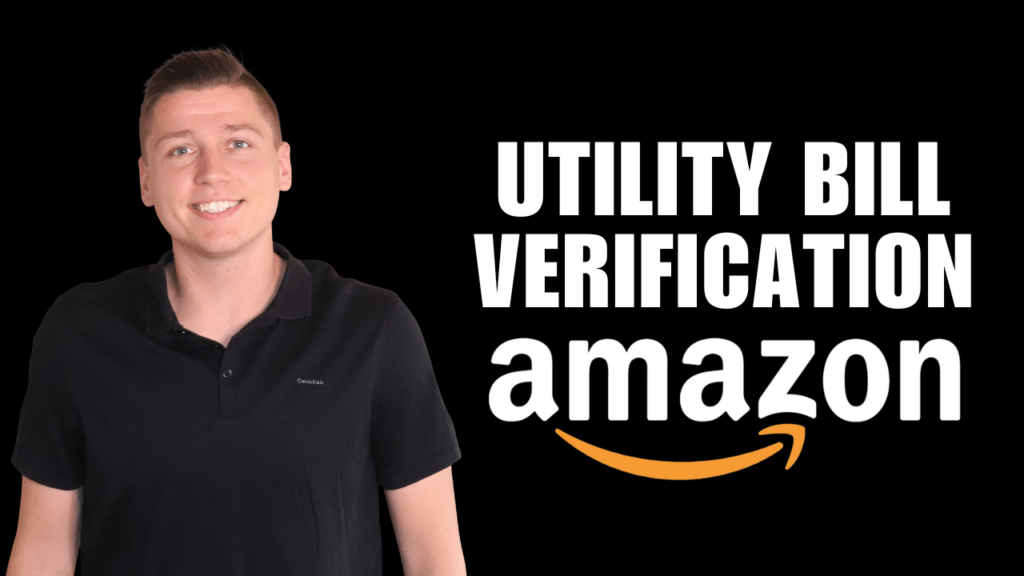Helium 10, Jungle Scout, Viral Launch.
What do these product research apps have in common?
They’re being used by your competitors to sell more products than you on Amazon.
But which one should you go with to get the most value without breaking the bank?
As a long-time Amazon seller who’s literally tried them all, the answer for me is clearly Helium 10.
Its suite of tools is unmatched by other apps, and in my experience, the data is the most up-to-date and accurate.
As a result, it has helped steer me to countless successful Amazon products.
In this step-by-step guide, I’ll guide you through a quick tutorial on how to perform product research using Helium 10, and provide a handful of tips and tricks on how to use some of my favorite features to your advantage to find winning products.
| Q & A: Should I Start out with the Helium 10 Monthly or Platinum Plan? I recommend starting out with the monthly plan for one main reason. The monthly plan is a great way of testing the Amazon waters. Let’s imagine you opt for the premium plan, but ultimately decide selling on Amazon is just not for you. This way, there’s less of a financial loss. |
Using Helium 10 Chrome Extension.
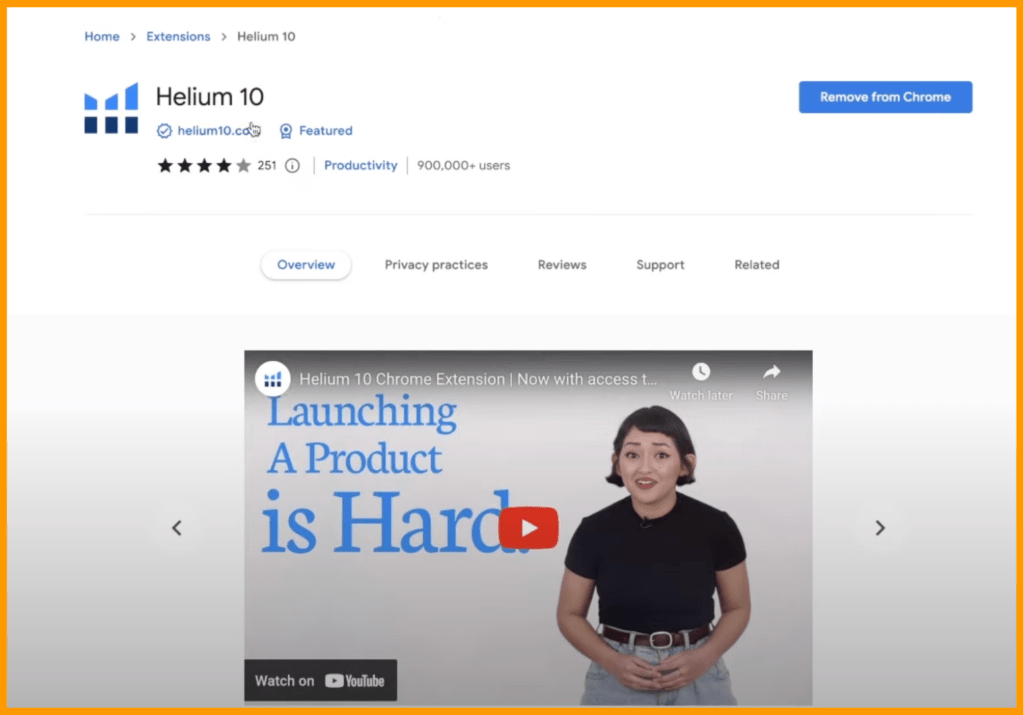
The Helium 10 browser extension is chaulked full of time-saving tools.
You can download the extension from the Chrome store, and simply sign in using your Helium 10 credentials.
The extension makes it super easy to check and validate product ideas, estimate profits, and help plan for seasonal trends, amongst other features.
It can also be used to perform product research on other e-commerce sites like Wal-Mart.
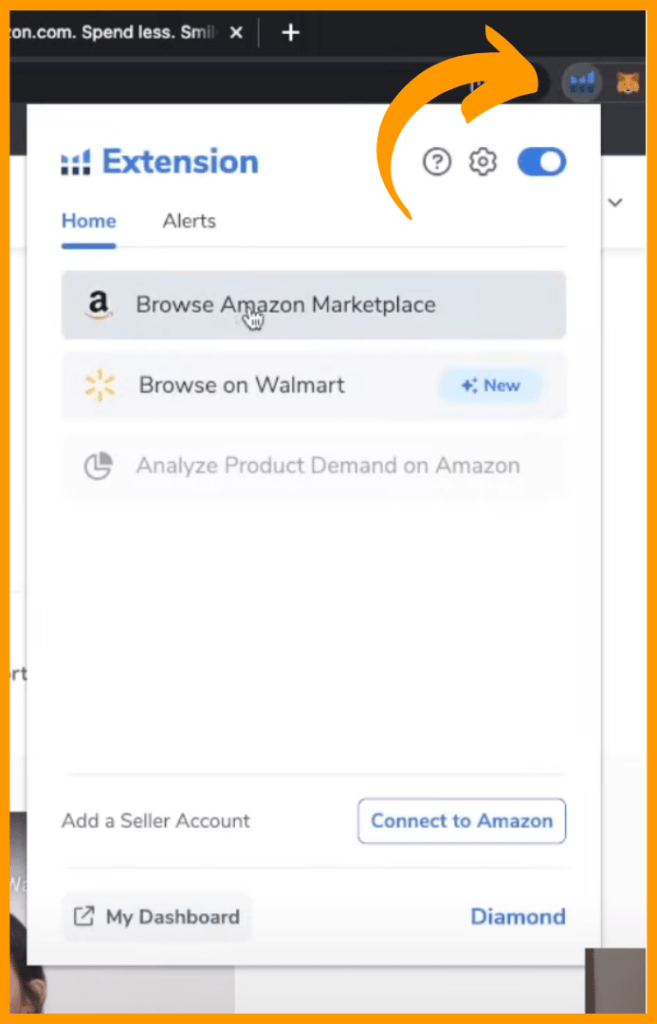
The Magic of Helium 10’s Black Box
Blackbox is one of my favorite Helium 10 features.
The tool makes finding profitable products easy by scanning the entire marketplace using filters such as category, price, and sales data to narrow down your search.
This is a powerful feature. And as you become more experienced with it, you’ll learn what to look out for and avoid when using it.
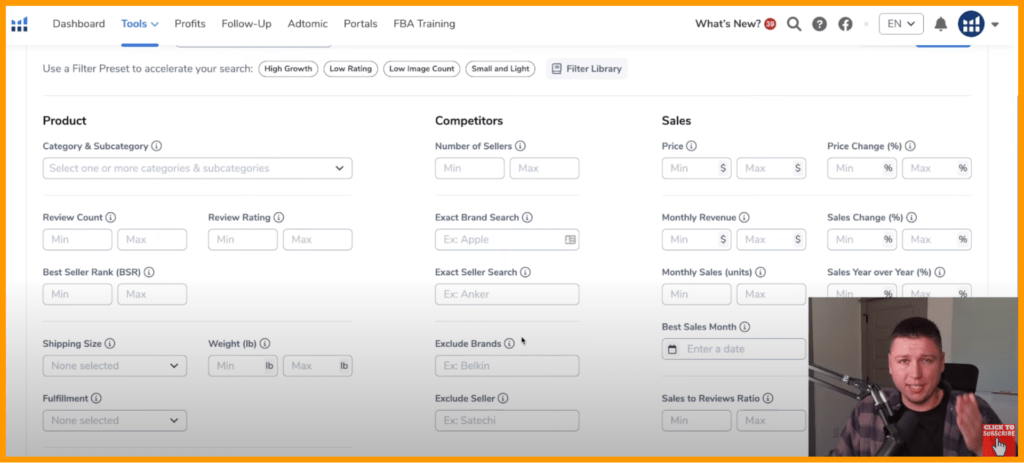
Category and Subcategory:
I recommend spending time browsing through categories in order to get ideas rolling.
Things I keep an eye out for:
- Unique and off-the-wall items (these can have a lot of market potential)
- Lightweight Products
- Possible value-adds to existing products
I’ve spent countless hours doing this and contributed much of my success to just browsing the marketplace and brainstorming possible ideas.
But just like I mentioned on my YouTube channel, while stats and data are crucial they’re only one part of the equation. Finding unique and creative products is equally as important.
A few of my favorite categories to focus in on are:
- Pet Supplies
- Arts and Crafts
- Kitchen and Dining
- Industrial and Scientific
- Office Supplies
| Why I Avoid Selling Clothing on Amazon Here’s a common scenario. A customer buys an article of clothing from Amazon. Upon delivery, the product doesn’t fit or the customer doesn’t like it. Unsatisfied with their order, they return it for a refund or request an exchange. As a result, your inbox is filled with messages that you must answer in a timely fashion, or risk getting a strike from Amazon. Essentially, selling clothing will keep you busier. That’s why I typically try to avoid it. |
Sales:

Input the range in which you’re willing to spend per item here.
I’ve found the most success selling products between the $13 and $55 dollar range.
Margins on products under $13 tend to get eaten up by Amazon and other indirect fees.
I’ve used $55 on the upper range for this example, but you can expect this to increase as you scale (and unfortunately, as inflation continues to rise.)
Of course, this will be different for each seller.
I don’t usually input anything on the price change percentage.
Review Counts and Ratings:
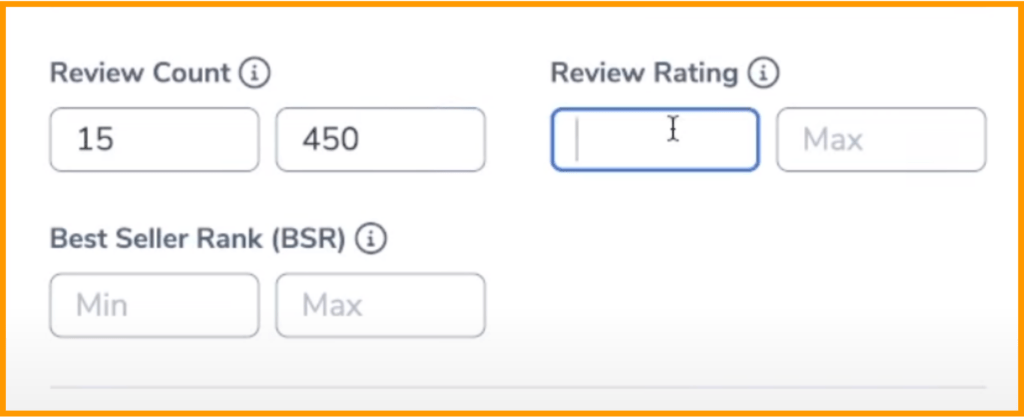
Think of reviews as currency on Amazon.
Those with the best-reviewed products will outsell their competition and dominate the niche.
Therefore, we want to find listings with few or poor reviews so we can improve on the product or listing.
That’s why I usually search for listings with under 500 reviews.
For review rating, I recommend searching under 5 stars that way there’s something to improve on.
Remember, the goal is to outperform your competitors, so steer away from sellers with thousands of five-star reviews as they’re often difficult to compete with.
What’s the Ideal Monthly Revenue?
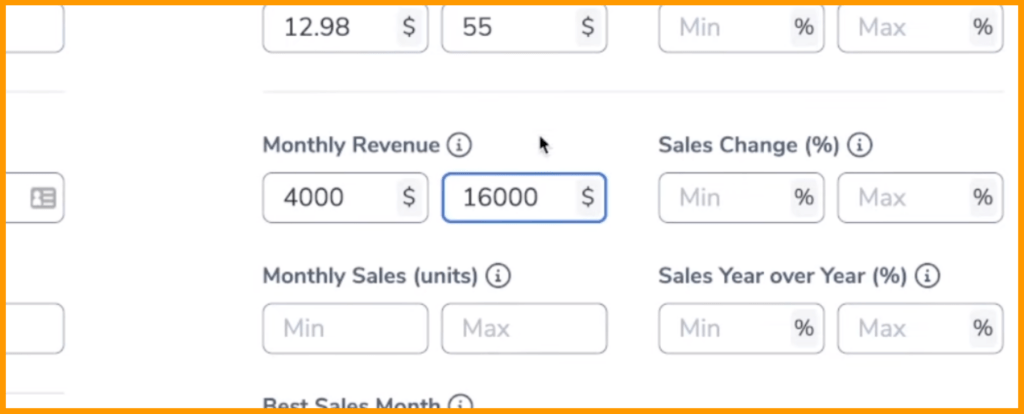
I’ve used $4,000-$16,000 for this example, but this is ultimately up to you.
This will depend on a multitude of factors, but if you’re just starting out, I’d recommend using this range.
Why?
Higher-priced items are harder to compete with as you’ll be up against sellers with large budgets.
It’s entirely possible to scale to this over time, but for most beginners, you’ll want to keep your price point on the low side.
Whatever you choose to input (and I encourage you to spend time playing around with it) Helium 10 will auto-populate products that fit your criteria.
From here, you can use Helium 10 to analyze current and up-and-coming trends, seasonal opportunities, and more.
In my YouTube video here, I walk you through ways to use this search function to your advantage.
Finding Obscure Niches with Helium 10’s Keyword Search
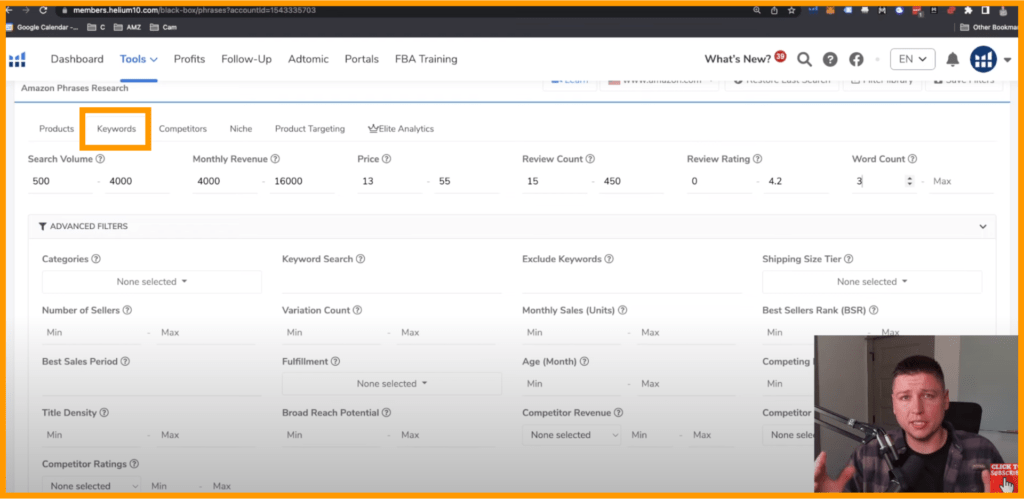
I love using the keyword search tool for product inspiration!
Longform keyword searches return a much broader set of products to sift through, so there are more listings to get lost in.
I pay close attention to the number of keywords here. I’ve set this example to have a minimum of 3 keywords.
Here’s why.
I generic short-form search like ‘toys’ will return an encyclopedia of listings that will be impossible to sift through; not the most efficient form of market research given the power of Helium 10.
But adding minimum keywords will make for a more specific search.
A search like “Soft toys Christmas” will bring us to a smaller niche, where we can more easily use the software to find market opportunities.
| What is Amazon’s Best Seller’s Ranking (BSR)? For an in-depth explanation of what Amazon’s BSR is, check out my YouTube video here. |
Helium 10’S X-Ray Tool
Helium 10’s X-Ray tools allow sellers to quickly and easily scan through potential products while browsing Amazon’s marketplace.
You can access it from the Helium 10 browser extension.
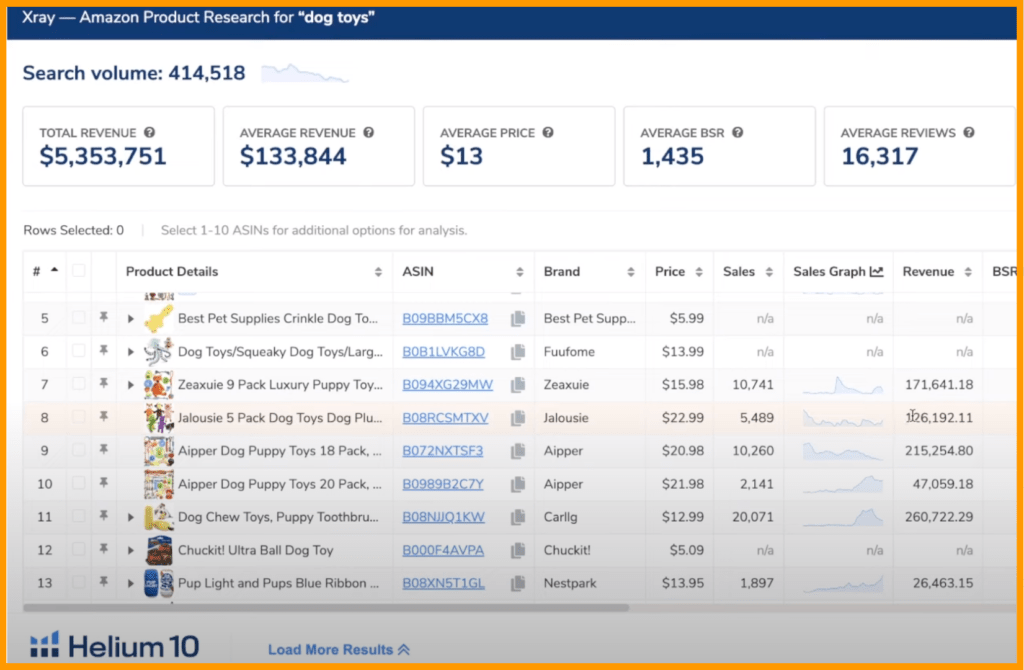
One of the best features is the Sales Graph function which shows product sales over time. A quick glance of this will show you if that product’s demand has been increasing over time.
Reasons Why I love X-RAY:
- Researching products can be an absolute time pirate. With X-Ray, there’s a mountain of easy-to-understand, auto-generated data.
- X-ray is a starting point to dive down the “Amazon rabbit hole.” In other words, you’re likely to uncover a lot of potential with this feature.
- You can use this tool in advertising campaigns to optimize your listing against the competition.
Learn more about this feature by heading over to my YouTube series on the topic.
Are you Interested in trying Helium 10? Click here to get 50% off Helium 10 with the Promo Code [CAMFBA50]

